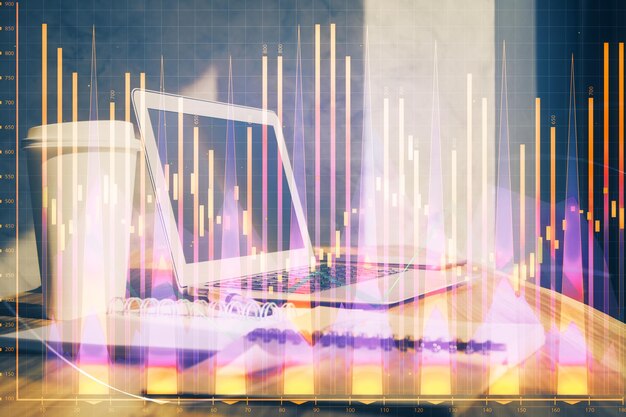How Much Can You Potentially Earn with Futures Trading?
Are you intrigued by the world of futures trading and wondering just how much money you can make? Futures trading offers enticing prospects, driven by the allure of substantial gains and the thrill of market speculation. However, this potential comes with its own set of risks and uncertainties. In this guide, we will dive into the intricacies of futures trading, exploring its potential profitability while equipping you with a well-rounded understanding of this dynamic financial instrument.
Understanding Futures Trading
Futures trading involves buying and selling contracts for the delivery of assets at a future date. The contracts cover a variety of underlying assets, such as commodities, currencies, indices, and even cryptocurrencies. Unlike traditional investing, futures trading leverages speculation on price movements, allowing traders to bet on both upward and downward trends.
The Role of Leverage
One of the key attractions of futures trading is leverage. Leverage allows traders to control a large position with a relatively small initial margin, amplifying potential profits. However, it also increases the risk of significant losses. It's crucial to understand that while leverage can magnify gains, it can equally multiply losses, making risk management an essential aspect of futures trading.
Types of Futures Contracts
Futures contracts can be categorized based on the underlying assets:
- Commodity Futures: Cover physical goods like oil, gold, and agricultural products.
- Financial Futures: Linked to financial instruments such as interest rates, bonds, and treasuries.
- Currency Futures: Involve major currencies like the USD, EUR, and JPY.
- Stock Index Futures: Tied to stock market indices, such as the S&P 500 or NASDAQ.
Factors Influencing Profitability
Understanding the potential profitability in futures trading requires assessing several factors that influence market dynamics and trader performance.
Market Volatility
Market volatility can significantly impact futures trading outcomes. Higher volatility often translates to greater price swings, which can provide more opportunities for profit. However, it also elevates risk levels. Savvy traders capitalize on volatility through informed speculation and strategic decision-making.
Trading Strategies
The choice of trading strategy plays a pivotal role in determining profitability. Some commonly employed strategies include:
- Trend Following: Capitalizing on sustained market trends over time.
- Scalping: Making quick, small trades to exploit minor price changes.
- Arbitrage: Profiting from price discrepancies in different markets.
- Hedging: Reducing risk exposure by taking offsetting positions in correlated assets.
Timing and Execution
Successful futures traders often focus on timing and execution. Identifying optimal entry and exit points, coupled with disciplined order execution, can enhance profitability. Utilizing advanced trading platforms and tools is crucial to precise timing.
Potential Earnings in Futures Trading
The potential earnings in futures trading are highly variable, dependent on a trader's knowledge, strategy, and market conditions.
Illustrative Earnings Scenarios
High Risk-High Reward: A trader with a keen understanding of market trends and leverage could see substantial short-term gains. However, this entails higher risk, and losses could be equally significant.
Moderate Growth: Traders employing balanced strategies with prudent risk management can achieve steady, moderate returns over time. This approach requires patience and discipline but minimizes the risk of severe losses.
Hedging Strategies: Using futures to hedge against price movements can result in smaller, consistent gains by safeguarding other investments. This reduces volatility, focusing on capital preservation rather than aggressive growth.
Diverse Outcomes
While some traders may witness exponential growth, others might experience losses. The outcome largely depends on the trader's skillset, strategic approach, and market conditions. Building a robust understanding of the market and a well-designed trading plan can tilt the odds in favor of success.
Strategies for Successful Futures Trading
Achieving success in futures trading involves several key considerations and practices.
Education and Research
Continuous education and market research are foundational to profitable futures trading. Staying updated with market trends, news, and economic indicators is crucial for informed decision-making.
Risk Management
Implementing effective risk management strategies is vital to safeguarding against volatile market conditions. Key practices include:
- Setting Stop-Loss Orders: Limiting losses by automatically selling a position at a predetermined price.
- Diversification: Allocating investments across multiple futures contracts to spread risk.
- Position Sizing: Ensuring each trade is appropriately sized based on the trader's risk tolerance and capital.
Psychological Discipline
Numerous traders emphasize the importance of psychological discipline. It’s essential to manage emotions, stay detached from trades, and adhere to the pre-defined trading plan to avoid impulsive decisions and emotional trading.
Conclusion: Navigating the Path to Profit
Futures trading offers an exciting opportunity to profit from market fluctuations, but it demands a strong understanding of the instruments, sound strategies, and prudent risk management. Remember, while the potential for substantial gains is ever-present, futures trading is not devoid of risk. Enter with accurate expectations, and continuously evolve as a trader to navigate the unpredictable landscape.
Key Takeaways
📈 Informed Speculation: Strong research and strategy creation are crucial. 💡 Risk Management is Key: Always use stop-loss orders and diversify trades. 🗺️ Stay Educated: Constant learning and adapting to market trends boost your potential success. 🧘 Psychological Discipline: Emotional detachment encourages objective decisions for long-term success.
By adopting these insights and a disciplined approach, you're equipping yourself to explore the promising yet challenging world of futures trading 🚀.
